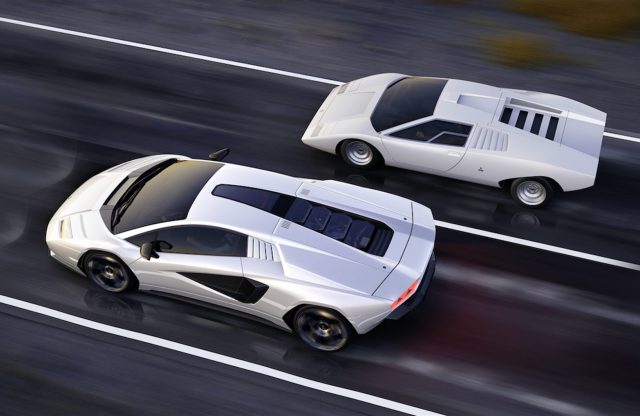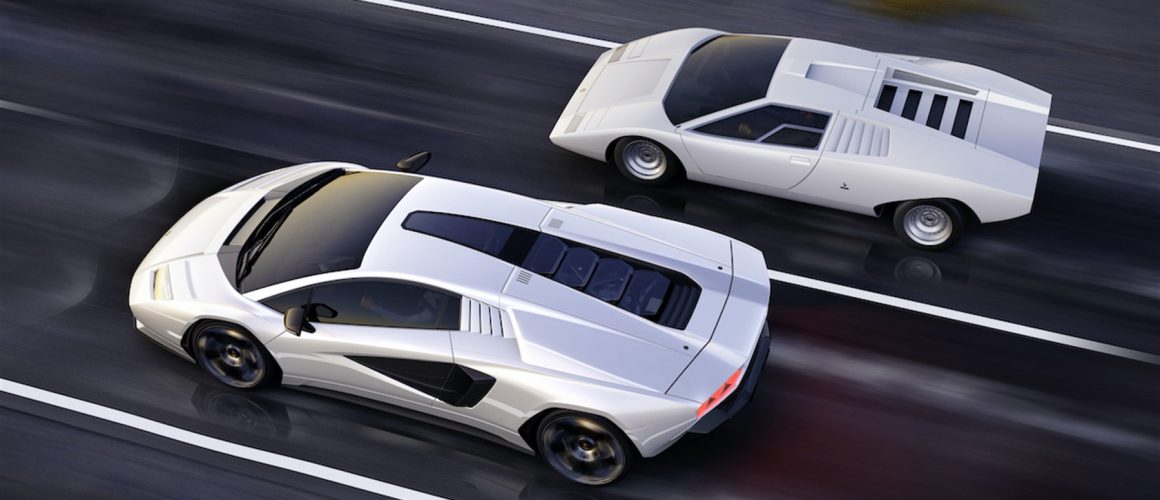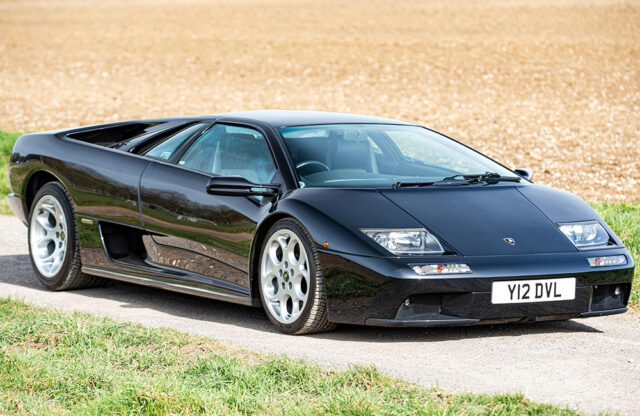Words: Massimo Delbò | Photography: Lamborghini
“It is something so special that Lamborghini never did it before,” says the marque’s chief technology officer, Maurizio Reggiani, of the new LPI 800.
“Nothing was easy in creating its design,” adds Mitja Borkert, director of Lamborghini Centro Stile. “We wanted to keep the magic feeling of the 1971 original idea-car, while creating the shape of a Lamborghini representing the 21st century technology of a hybrid modern supercar, with more than 800bhp and capable of more than 350km/h.”
The Countach LPI 800-4 is a tribute to the original 1971 Countach LP500, a concept that stormed the automotive design and supercar worlds, and created the design and technical DNA still today used in the cars manufactured in Sant’Agata Bolognese. As underlined by Reggiani, it is the first time Lamborghini has celebrated a past model in such a remarkable way, but the opportunity offered on the occasion of the original car’s 50th anniversary was too unique to ignore.
Aside from the design recalling that of the original model, the Countach LPI 800-4 is a state-of-the-art, technologically advanced supercar, originally derived from the Aventador and Sián. It is equipped with the Longitudinale Posteriore (rear-longitudinal) aspirated 6.5-litre V12, paired with the supercapacitor electric system created by Lamborghini for the Sián. The total generated from the 780Cv plus 34Cv is 814Cv – impressive for a car that has a dry weight of 1595kg (3516lb). The 0-100km/h (0-62mph) sprint happens in 2.8 seconds, while the maximum speed is 355km/h.
The V12 is combined with a 48-volt e-motor mounted directly on the gearbox to provide that further 34Cv for immediate response when the driving programme is set to Road and increased performance in Sport or Race. It is the only mild-hybrid technology to create a direct connection between electric motor and wheels, preserving the pure V12 behaviour.
The e-motor is powered by a supercapacitor that provides three times more power compared with a lithium-ion battery of the same weight. The monocoque chassis and all the body panels are made from carbonfibre, granting the Countach LPI 800-4 a power-to-weight ratio of 1.95kg/Cv. Moveable air vents are produced with 3D-printing technology, and there is a photocromatic roof – changing from solid to transparent at the push of a button.
“These act as a reminder that this car, despite its historic inspiration, is a supercar for the 21st century,” explains Reggiani. “The Countach’s distinctive silhouette – with the essential line running from front to rear, sharp angles and lines, and idiosyncratic wedge shape – innovated modern super sports designs, and set the styling DNA for all the following Lamborghini models.”
“We have a model of the first Countach in our Centro Stile,” adds Borkert. “Whenever I look at it, it gives me goosebumps. It serves as the perfect reminder to design every future Lamborghini in a visionary and futuristic way. The final outline of the 800-4 is pure and uncluttered, with a distinctive Countach face inspired by the Quattrovalvole edition. You can see this in the assertive lines of the front bonnet, the long, low rectangular grille and the headlights, as well as in the hexagonal-themed wheelarches.
“The sharp inclination of the greenhouse adopts the straight lines of the original Countach, and the air scoops are integrated fluidly in the car’s strong shoulders, embellished with the distinctive Countach slatted grills.”
The iconic and aerodynamically powerful NACA air intakes cut into the side and doors of the Countach LPI 800-4, while the distinctive Periscopio lines running through the roof to the back of the car, particularly distinctive if viewed from above, appear to float towards the rear.
The LPI 800-4 sports the Countach’s quad exhaust tailpipes, connected within the carbonfibre rear diffuser. Access for driver and passenger is of course via the legendary scissor doors, which were first introduced on the Countach and have become a Lamborghini V12 signature.
Only 112 Countach LPI 800-4s will be manufactured – a number picked from the original project number LP112, denoting the Longitudinale Posteriore position of the engine, the first occurrence of this solution for the firm (for the first number one), and 12 cylinders.
Unveiled at The Quail, A Motoring Gathering during the Monterey car week, it will be delivered from the first quarter of 2022. There is not an official list price yet, but rumours suggest £1,700,000 ($2,359,174).
If you liked this, then why not subscribe to Magneto magazine today?























